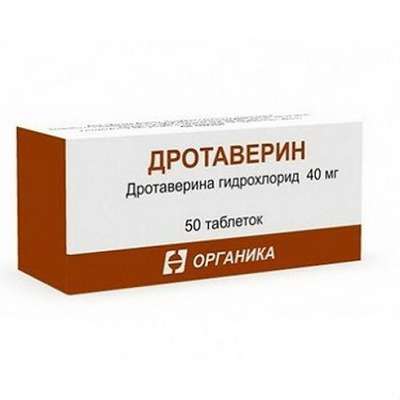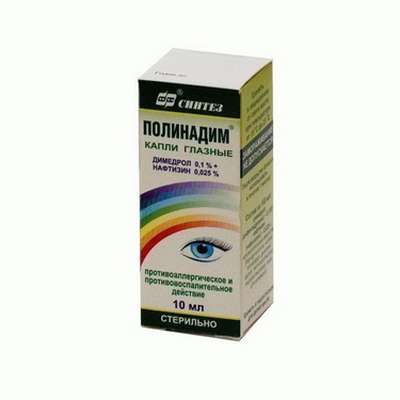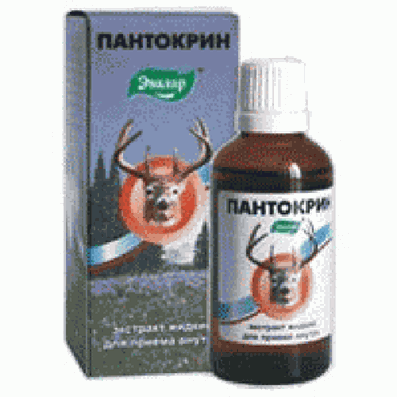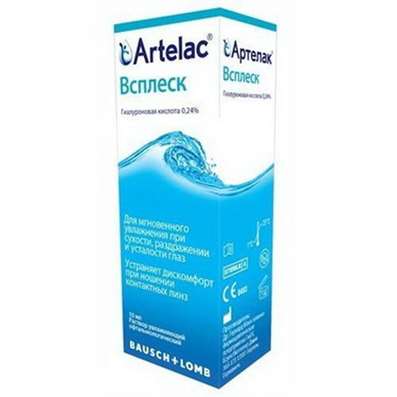Instruction for use: Haemodes-N
I want this, give me price
Dosage form: Solution for infusions
Active substance: Kalii chloridum + Calcii chloridum + Magnii chloridum + Natrii hydrocarbonas+ Natrii chloridum + Povidonum 8000
ATX
B05AA Blood substitutes and blood plasma preparations
Pharmacological group
Substitutes for plasma and other blood components in combinations
The nosological classification (ICD-10)
A41.9 Septicemia, unspecified: Septic diseases; Septicemia / bacteremia; Toxico-infectious shock; Endotoxin shock; Bacterial septicemia; Bacterial infections of severe course; Generalized infections; Generalized systemic infections; Infections generalized; Wound sepsis; Septiccopymia; Septic-toxic complications; Septicemia; Septic conditions; Septic shock; Septic condition; Septic shock
A48.3 Toxic shock syndrome: Bacteremic shock; Infectious-toxic shock; Intoxication syndrome; Toxico-infectious shock; Toxic shock; Chronic intoxication in diseases of the digestive tract; Chronic intoxication in gastrointestinal infections; Endotoxin shock
B99.9 Other and unspecified infectious diseases
I73.0 Raynaud's Syndrome: Raynaud's syndrome Leriche; Raynaud's disease; Raynaud's phenomenon; RaynaudLeriche syndrome; Raynaud's disease; Raynaud's syndrome with trophic disorders; Peripheral angiopathy
I73.8 Other specified peripheral vascular disease: Syndrome of intermittent claudication; endarteritis obliterans; acrocyanosis; vasoconstriction; occlusive disease; Intermittent claudication; Disorders of vascular innervation; Spasm of peripheral arteries; Arterial angiopathy; Venous insufficiency and its complications; Spasm of peripheral vessels; The spasm of coronary vessels; endarteritis; cooling stop; Occlusal disorders of peripheral circulation; Peripheral vascular occlusion
I80.9 Phlebitis and thrombophlebitis of unspecified site: Acute thrombophlebitis of superficial and deep veins; Thrombophlebitis; Phlebitis of superficial veins
I82.9 Embolism and thrombosis of unspecified vein: Venous embolism; Venous thrombosis; Diseases caused by blood clots in the vessels; Acute vascular occlusion; Acute venous thrombosis; Acute thrombosis of veins; Thrombosis; Thromboembolism; Phlebothrombosis; Embolism
R57.8.0 * Burn shock: Pain shock for burns; Burn shock
R57.9 Shock, unspecified: Pain shock; Hemolytic shock; Neurogenic shock; Shock; Shock condition; Shock states
R58 Bleeding, not elsewhere classified: Abdominal apoplexy; Hemorrhagia; Haemorrhage of the esophagus; Hemorrhage; Generalized bleeding; Diffuse bleeding; Diffuse bleeding; Prolonged bleeding; Blood loss; Blood loss during surgical interventions; Bleeding during surgery and in the postoperative period; Bleeding during labor; Bleeding and haemorrhage in hemophilia B; Bleeding from the gums; Bleeding intraoperative abdominal; Bleeding against a background of coumarin anticoagulants; Hepatic hepatitis; Bleeding in hemophilia A; Bleeding at hemophilia A; Bleeding with inhibitory forms of hemophilia A and B; Bleeding due to leukemia; Bleeding in patients with leukemia; Bleeding; Bleeding due to portal hypertension; Bleeding due to hyperfibrinolysis; Drug bleeding; Local bleeding; Local bleeding due to activation of fibrinolysis; Massive blood loss; Acute blood loss; Parenchymal hemorrhage; Hepatic bleeding; Postoperative hemorrhage; Kidney bleeding; Vascular-platelet hemostasis; Traumatic bleeding; Threatening bleeding; Chronic blood loss
T30 Thermal and chemical burns of unspecified site: Pain syndrome with burns; Pain in burns; Pain with burns; Sluggishly healing post-burn wounds; Deep burns with a wet scab; Deep burns with abundant compartments; Deep burn; Laser burn; Burn; Burn of rectum and perineum; Burn with mild exudation; Burn disease; Burn injury; Superficial burn; Superficial burn of I and II degree; Superficial skin burns; After-burn trophic ulcer and wound; Post-burn complication; Loss of fluid in burns; Sepsis burn; Thermal burns; Thermal skin lesions; Thermal burn; Trophic after-burn ulcers; Chemical burn; Surgical burn
T79.4 Traumatic shock: Haemorrhagic shock; Crash Syndrome; Posthemorrhagic shock; Postoperative shock; Post-traumatic shock; Post-traumatic shock; Traumatic shock; Syndrome of hemorrhagic shock and encephalopathy
T81.1 Shock during or after the procedure, not elsewhere classified: Operating shock; Postoperative shock; Operational shock
Z100 * CLASS XXII Surgical practice: Abdominal surgery; adenomectomy; Amputation; Coronary angioplasty; Angioplasty of the carotid arteries; Antiseptic skin treatment for wounds; Antiseptic Hand; Appendectomy; atherectomy; Balloon coronary angioplasty; Vaginal hysterectomy; The coronary bypass; Interventions in the vagina and cervix; Interventions on the bladder; Intervention in the mouth; Restoration and reconstructive surgery; Hand hygiene of medical personnel; Gynecologic surgery; Gynecological intervention; Gynecological surgery; Hypovolemic shock during operations; Disinfection of purulent wounds; Disinfection of wounds edges; Diagnostic intervention; Diagnostic procedures; Cervical Diathermocoagulation; Long-surgery; Replacing the fistula catheters; Infection in orthopedic surgery; Artificial heart valve; cystectomy; Short-term outpatient surgery; Short-term operation; Short surgical procedures; Krikotireotomiya; Blood loss during surgery; Bleeding during surgery and in the postoperative period; Kuldotsentez; laser photocoagulation; laser coagulation; retinal laser coagulation; Laparoscopy; Laparoscopy in Gynecology; CSF fistula; Small gynecological operations; Small surgical procedures; Mastectomy and subsequent plastic; mediastinotomy; Microsurgical operations on the ear; Mukogingivalnye operation; suturing; Minor surgery; neurosurgical operation; Immobilization of the eyeball in ophthalmic surgery; testectomy; pancreatectomy; Perikardektomiya; The period of rehabilitation after surgery; The period of convalescence after surgery; Percutaneous transluminal coronary angioplasty; Pleural thoracentesis; Pneumonia postoperative and posttraumatic; Preparation for surgical procedures; Preparation for surgery; Preparation of the surgeon's hands before surgery; Preparation of the colon for surgical procedures; Postoperative aspiration pneumonia in neurosurgical and thoracic surgery; Postoperative nausea; Postoperative bleeding; postoperative granuloma; postoperative shock; The early postoperative period; myocardial revascularization; Radiectomy; gastric Resection; bowel resection; uterine Resection; liver Resection; enterectomy; Resection of part of the stomach; Reocclusion of the operated vessel; Bonding tissues during surgical procedures; Removal of sutures; Condition after eye surgery; Condition after surgery; Condition after surgery in the nasal cavity; Condition after gastrectomy; Status after resection of the small intestine; Condition after tonsillectomy; Condition after removal of the duodenum; Condition after phlebectomy; Vascular surgery; Splenectomy; Sterilization of surgical instruments; Sterilization of surgical instruments; sternotomy; Dental surgery; Dental intervention in periodontal tissues; strumectomy; Tonsillectomy; Thoracic surgery; Thoracic surgery; total gastrectomy; Transdermal intravascular coronary angioplasty; Transurethral resection; Turbinektomiya; Removal of a tooth; cataract surgery; Removal of cysts; tonsillectomy; Removal of fibroids; Removing the mobile primary teeth; Removing polyps; Removing broken tooth; Removal of the uterus body; Removal of sutures; Fistula likvoroprovodyaschih ways; Frontoetmoidogaymorotomiya; Surgical infection; Surgical treatment of chronic limb ulcers; Surgery; The surgery in the anal area; The surgery on the colon; Surgical practice; The surgical procedure; Surgical interventions; Surgery on the gastrointestinal tract; Surgical procedures on the urinary tract; Surgical procedures on the urinary system; Surgical intervention of the genitourinary system; Surgical procedures on the heart; Surgical manipulation; surgery; Surgery on the veins; Surgical intervention; Vascular surgery; Surgical treatment of thrombosis; Surgery; cholecystectomy; Partial gastric resection; hysterectomy; Percutaneous transluminal coronary angioplasty; Percutaneous transluminal angioplasty; Coronary artery bypass; tooth Extirpation; Extirpation of milk teeth; pulpectomy; pulsative cardiopulmonary bypass; tooth Extraction; teeth Extraction; cataract extraction; Electrocoagulation; endourological intervention; episiotomy; Etmoidotomiya; Complications after tooth extraction
Z98.8 Other specified post-surgical conditions: Purulent complications in the postoperative period; Suppurative complications of surgery; Postoperative liver dysfunction; Postoperative vomiting; Postoperative complications; Postoperative period; Early postoperative period
Composition
Solution for infusion - 1 ml
active substance: Sorbitol 60 mg
Sodium lactate 19 mg
Sodium Chloride 6 mg
Calcium chloride (in terms of dry matter) 0.1 mg
Potassium chloride 0.3 mg
Magnesium chloride (in terms of dry matter) 0.2 mg
Excipients: water for injection - up to 1 ml
Ionic composition of the preparation:
Na + 6.395 mg / ml (278.16 mmol / L)
K + 0.157 mg / ml (4.02 mmol / L)
Ca ++ 0.036 mg / ml (0.9 mmol / L)
Mg ++ 0.051 mg / ml (2.1 mmol / L)
Cl-3.995 mg / ml (112.69 mmol / L)
CH3CH (OH) COO-15.635 mg / ml (175.52 mmol / L)
Indicators: theoretical osmolarity - 900 mosmol / l; PH 6-7.6
Description of dosage form
Transparent colorless liquid.
Pharmachologic effect
Mode of action - Anti-shock, detoxification, normalizing rheological properties of blood, alkalinizing blood.
Pharmacodynamics
The main pharmacologically active substances are sorbitol and sodium lactate. In the liver, sorbitol is first converted to fructose, which is then converted into glucose, and then into glycogen. Part of sorbitol is used for urgent energy needs, while the other part is stored as a reserve in the form of glycogen. Isotonic sorbitol solution has a disaggregant effect and, thus, improves microcirculation and perfusion of tissues.
Unlike the bicarbonate solution, correction of metabolic acidosis with sodium lactate passes more slowly, as it is included in the metabolism, without causing sharp fluctuations in pH. The effect of sodium lactate is manifested after 20-30 minutes after administration.
Sodium chloride - plazmozameschayuschee means, shows detoxication, rehydration effect. Eliminates deficiency of sodium and chlorine ions at different pathological conditions.
Calcium chloride eliminates calcium deficiency. Calcium ions are necessary for the implementation of the process of transmission of nerve impulses, reduction of skeletal and smooth muscles, myocardial activity, formation of bone tissue, and clotting of blood. Reduces the permeability of cells and the vascular wall, prevents the development of inflammatory reactions, increases the resistance of the body to infections and can significantly enhance phagocytosis.
Potassium chloride restores the water-electrolyte balance. It exhibits a negative chrono- and batmotropic effect, in high doses - a negative foreign, dromotropic and moderate diuretic effect. Takes part in the process of carrying out nerve impulses. Increases the content of acetylcholine and causes excitation of the sympathetic part of the autonomic nervous system. Improves the contraction of skeletal muscles in muscular dystrophy, myasthenia gravis.
Pharmacokinetics
Sorbitol quickly enters the general metabolism: 80-90% is utilized in the liver and accumulates in the form of glycogen, 5% is deposited in the brain tissues, heart muscle and skeletal muscles, 6-12% is excreted in the urine. When introduced into the vascular bed of sodium lactate interacts with carbon dioxide and water, forming sodium bicarbonate, which leads to an increase in the alkaline reserve of blood. Only half of the injected sodium lactate (isomer L) is considered active, and the other half (isomer D) is not metabolized and excreted in the urine.
Sodium chloride is rapidly excreted from the vascular bed, only temporarily increasing the volume of blood circulation. Do diuresis.
Indications of the drug Haemodes-N
To improve capillary blood flow for the purpose of prevention and treatment of traumatic, operational, hemolytic, toxic and burn shock, with acute blood loss, burn disease;
Infectious diseases, accompanied by intoxication, exacerbation of chronic hepatitis;
sepsis;
For preoperative preparation and in the postoperative period;
For improvement of arterial and venous circulation with the purpose of prophylaxis and treatment of thrombosis, thrombophlebitis, endarteritis;
Raynaud's disease.
Contraindications
Individual intolerance of the drug components;
alkalosis;
Cases where the infusion of large amounts of fluid is contraindicated (cerebral hemorrhage, thromboembolism, cardiovascular decompensation, arterial hypertension of the third degree).
With caution: with a violation of the liver, peptic ulcer, hemorrhagic colitis.
Pregnancy and breast-feeding
Data on use during pregnancy and breastfeeding are not available.
Side effects
There may be phenomena of alkalosis, allergic reactions (rashes on the skin, itching).
Interaction
Rheosorbilact® should not be mixed with phosphate- and carbonate-containing solutions. Do not use as a carrier solution for other drugs.
Dosing and Administration
IV, by drop infusion or by stream infusion.
Adults IV by drop infusion at a speed of 40-60 drops per minute. If necessary, it is allowed to spray the preparation after the sample is dripped at a rate of 30 drops per minute. After the administration of 15 drops, the infusion of the drug is stopped, and after 3 minutes, in the absence of a reaction, Rheosorbilact® is injected.
In chronic hepatitis - 400 ml (6-7 ml / kg body weight) drip, repeatedly.
At thromboobliterating diseases of blood vessels - at the rate of 8-10 ml / kg of body weight, drip, repeatedly, every other day, up to 10 infusions per course of treatment.
In the preoperative period and after various surgical interventions - in a dose of 400 ml (6-7 ml / kg body weight) drip, once or repeatedly, daily, for 3-5 days.
In acute blood loss - 1500-1800 ml (up to 25 ml / kg of body weight). In this case, the infusion of Rheosorbilact® is recommended to be performed on a pre-hospital stage, in a specialized ambulance.
In case of traumatic, burn, postoperative and hemolytic shock - 600-1000 ml (10-15 ml / kg of body weight) once and repeatedly, first spray, then by drop method;
Children under 6 years of age are recommended to take the drug in a dose of 10 ml / kg of body weight, from 6 to 12 years - in a dose of half the dose for adults. Children over 12 years - in a dose, the same as for adults.
Overdose
Symptoms: phenomena of alkalosis (quickly pass independently, provided that the drug is discontinued immediately).
Special instructions
The drug is used under the control of indicators of KHS and electrolytes of blood, as well as the functional state of the liver. With caution apply in patients suffering from calculous cholecystitis.
Release Form
Solution for infusion. For 200 or 400 ml of the drug in glass bottles. Each bottle in a pack of cardboard.
Manufacturer
LLC "Yuri-Farm".
Ukraine, 03680, Kiev, st. N. Amosova, 10.
Conditions of supply of pharmacies
On prescription.
Storage conditions of the drug Haemodes-N
In a dry, the dark place at a temperature of 2-25 ° C.
Keep out of the reach of children.
The shelf life of the drug Haemodes-N
2 years.
Do not use beyond the expiration date printed on the package.

 Cart
Cart





